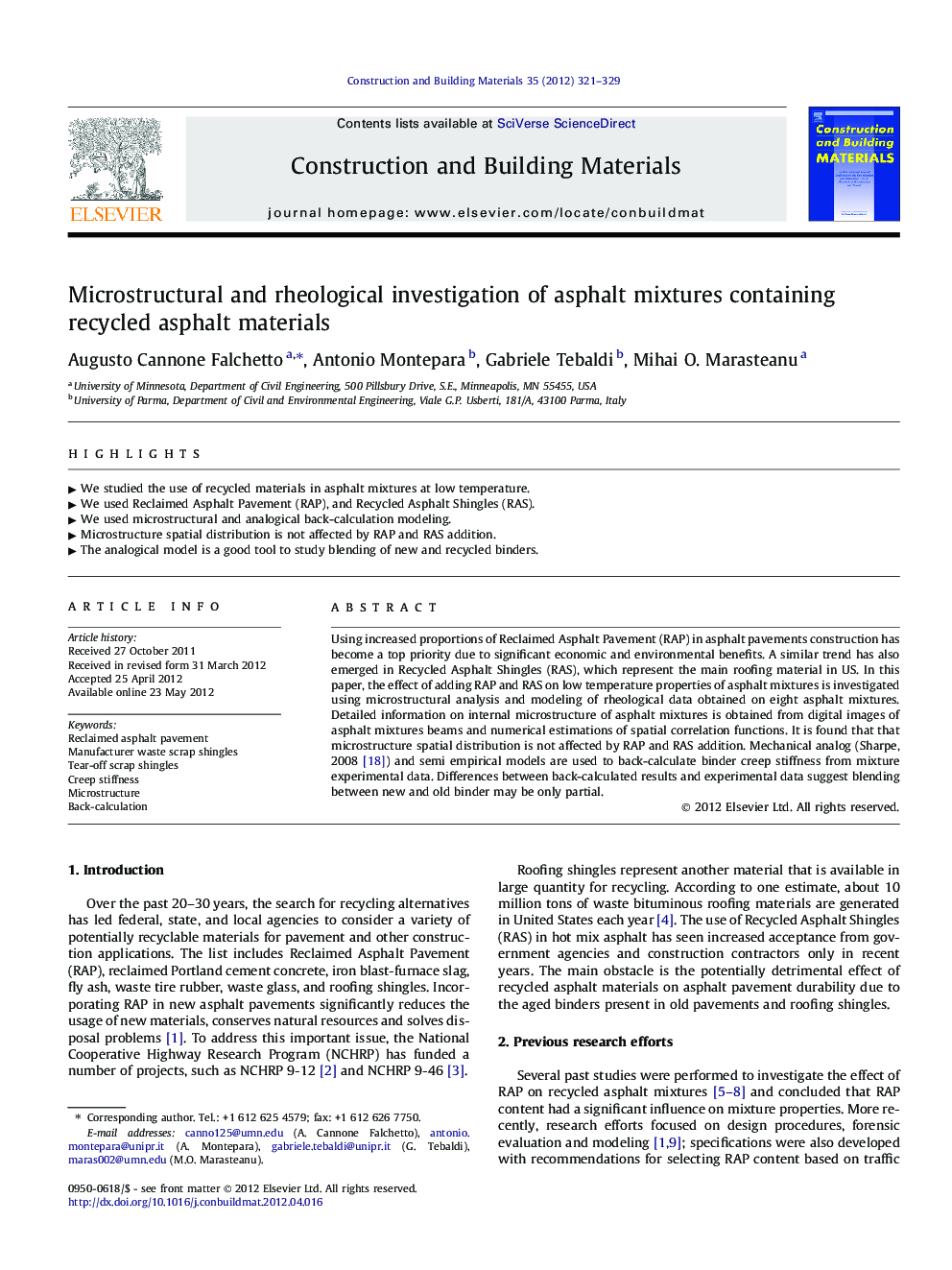| Article ID | Journal | Published Year | Pages | File Type |
|---|---|---|---|---|
| 258854 | Construction and Building Materials | 2012 | 9 Pages |
Using increased proportions of Reclaimed Asphalt Pavement (RAP) in asphalt pavements construction has become a top priority due to significant economic and environmental benefits. A similar trend has also emerged in Recycled Asphalt Shingles (RAS), which represent the main roofing material in US. In this paper, the effect of adding RAP and RAS on low temperature properties of asphalt mixtures is investigated using microstructural analysis and modeling of rheological data obtained on eight asphalt mixtures. Detailed information on internal microstructure of asphalt mixtures is obtained from digital images of asphalt mixtures beams and numerical estimations of spatial correlation functions. It is found that that microstructure spatial distribution is not affected by RAP and RAS addition. Mechanical analog (Sharpe, 2008 [18]) and semi empirical models are used to back-calculate binder creep stiffness from mixture experimental data. Differences between back-calculated results and experimental data suggest blending between new and old binder may be only partial.
► We studied the use of recycled materials in asphalt mixtures at low temperature. ► We used Reclaimed Asphalt Pavement (RAP), and Recycled Asphalt Shingles (RAS). ► We used microstructural and analogical back-calculation modeling. ► Microstructure spatial distribution is not affected by RAP and RAS addition. ► The analogical model is a good tool to study blending of new and recycled binders.
